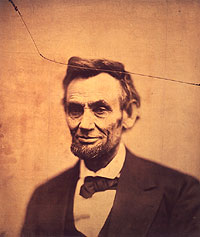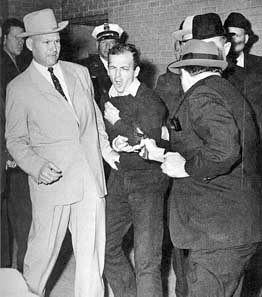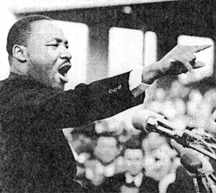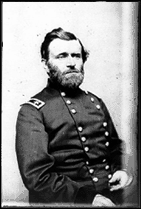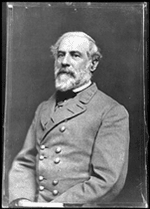Mr. Brissette's Homepage
- History
Matters
- Maps
- Library
Resources
- Early Exploration
- The Colonizing of North America
- New World
Exploration and English Ambition
- Encouragement
of Settlers in New England (1616)
- The New
England Confederation (1643)
- The Origins of Slavery
- Africans in America
- Europeans Come to
Western Africa
- The African Slave
Trade and the Middle Passage
- Arrival of First
Africans to Virginia Colony
- Against the
Traffic of Mens-body (1688)
- The Pre-Revolutionary Period
Joseph Galloway,
A Plan for the Union of Great Britain and the Colonies (1774)
- The Revolutionary War
- Thomas
Jefferson's Rough Draft of the Declaration of Independence (1776)
- The Wars of the
American Revolution
- The Early Republic
- Washington's First
Inaugural Address (1789)
- Washington's
Second Inaugural Address (1793)
- The Burr-Hamilton
Duel (1804)
- Nationalism and Expansion
- The Women's Movement
- Immigration
- Antebellum America
- Antebellum Slavery
- An African
American View of the Mexican War, Frederick Douglass (1848)
- Bleeding Kansas
- John Brown's Raid
(October 1859)
- The Civil War
- The
Emancipation Proclamation (September 1862)
- The
Gettysburg Address (November 1863)
- Surrender at
Appomattox (1865)
- Lincoln's
Last Public Address (April 1865)
- Reconstruction
- The Quest for Empire
- The First World War
- The Great Depression
- World War II
- The Beginning of the Cold War
- Abraham Lincoln's Assassination (April 14, 1865)
- The Civil War
(Ken Burns)
- Eyewitness
to History: The Civil War
- Library
Resources
- Biographies
- Timeline
- Battle
Maps
- The
Compromise of 1850 Speeches
- Fragments on
Government and Slavery, Abraham Lincoln (1854)
- John
Brown's Failures
- The War
- Fort Sumter (April
12-14, 1861)
- First Bull
Run (July 21, 1861)
- Shiloh
(April 6-7, 1862)
- Peninsular
Campaign Battle Map (March-July 1862)
- Antietam
(September 16-18, 1862)
- Fredericksburg
(December 13, 1862)
- Chancellorsville (May
2-6, 1863)
- The
Gettysburg Address (November 1863)
- Surrender at
Appomattox (1865)
- First World
War.Com
- Eyewitness
to History: World War One
- Kaiser
Wilhelm II
- Franco-Russian
Military Convention (1892)
- Germany's
'Blank Cheque' to Austria Hungary (June 6, 1914)
- The Fall of
Liege-A German Officer's Letter (August 1914)
- The
Battle of Mons (August 23, 1914)
- The
First Battle of the Marne: Joseph Joffre's Special Order (September 11,
1914)
- The Battle of Tannenberg (August 1914)
- Falkenhayn's Account of Verdun (February 21, 1916)
- The Zimmermann
Telegram (January 19, 1917)
- If Germany Had
Won World War I...
- The World at War:
History of WWII
- Eyewitness
to History: World War Two
- World
War II Timeline
- The Battle of
Britain (1940)
- The Battle of
Tarawa (1943)
- Inside a Nazi Death
Camp, 1944
- CNN
Cold War
- The Korean War
- The Cuban Missile Crisis
- The Vietnam War
- A
History of the Supreme Court
- Marbury
v. Madison (1803)
- Scott v. Sandford (1857)
- Powell
v. Alabama (1932)
- Korematsu v. United States (1944)
- Roe v.
Wade (1973)
- Rhode
Island v. Innis (1980)
- Boy
Scouts of America v. Dale (2000)
- Death
Penalty Debate
- Death
Penalty Methods
Title Page: The following information should be
included on your title page:
An
Original Title That Grabs the Reader’s Attention
(Align Center)
Name
Course
Period
Mr. Brissette
Due Date
(Align Right in Bottom Corner)
Body of Paper: Papers should be typed, double-spaced, 12 font size,
Helvetica font, no manipulated margins, no spaces between paragraphs and carefully
proofread. You should save your papers as you
type them. I will not tolerate "lost" papers due to computer
malfunctions. In addition, your papers should be created in Microsoft Word.
Start your paper at the top of page one. Include page numbers beginning with page two. Failure to follow paper length requirements will result in a failing grade (four pages means four full pages, not 3 3/4). Do not start a new page with less than five (5) lines of text.
Papers must have an introduction with a thesis sentence, topic sentences, effective support and analysis within paragraphs, and a thoughtful conclusion.
Introduction = grab the reader’s attention, first impression
Thesis = goal of your paper, last sentence of the
introduction
Topic Sentence = introduces issues that will be
discussed in paragraphs
Support = direct quotation or paraphrasing of the
readings
Analysis = why certain things happened and consequences
of events
Conclusion = do not restate paper, give reader
something to think about
Citations: You must include citations in your papers. Failure to do so will result in a failing grade. Also, failure to indicate that your idea came from someone else is plagiarism!
Plagiarism: Plagiarism, derived from the Latin word plagiarius (“kidnapper”), is the use of another person’s ideas or expressions in your writing without acknowledging the source. Plagiarism often results in severe penalties, ranging from failure on a paper to expulsion from school. You can certainly use another persons’ words and ideas in your research paper, but the borrowed material must not appear to be your creation.
Plagiarism does not only relate to failure to cite sources, but also to two other issues. One is submitting the work of a classmate or peer as your own work. Using another student’s work is grounds for failure and school disciplinary action. The other issue is when a student submits in a course a paper done for a previous course. Although this is not the same as stealing someone else’s thoughts, it is nonetheless “self-plagiarism” and will not be tolerated. Be sure to ask me if you want to rework a paper written for another course.
As a general rule, cite what is clearly someone else’s opinion or idea, and also what would not be considered “common knowledge.” For example, you rarely need to give sources of familiar quotations (“All Men are Created Equal”) or common knowledge (“George Washington was the first president of the United States”).
Use parenthetical citations in your papers. Remember, references in the text must clearly point to specific sources in the list of works cited.
Include the author’s last name and page number where passage can be found. For Internet sites, abbreviate the website address. Parenthetical citations should be placed at the end of the sentence.
Direct Quotation = taken exactly as it appears in the
reading and needs quotation marks.
Example: “The New World’s gold and silver, initially a
boon, ultimately brought about the decline of
Spain as a major power” (Norton 27). (Period after citation)
A direct quotation of more than four (4) lines should be set off from the text (called a “block quotation”). The block quotation should be double-spaced. Indent only the left margin (1"). No quotation marks are needed.
Example: There is much evidence that the discovery of riches in the Western Hemisphere had a negative
impact on some European powers such as Spain:
The New World’s gold and silver, initially a boon, ultimately brought about the decline of
Spain as a major power. The influx of unprecedented wealth lead to rapid inflation which
caused Spanish products to be overpriced in international markets and imported goods to
become cheaper in Spain. (Norton 27) (Period before citation)
Paraphrasing = occurs when you take the major theme/point from a reading but have changed a few words.
Example: While initially a great source of wealth, the New World’s gold and silver eventually brought an
end to Spain’s status as a major power (Norton 27). (Period after citation)
If the author’s name is given in the sentence, you need not repeat the name in the parenthetical citation that follows.
Example: Some historians, like Norton, believe that while initially a great source of wealth, the New
World’s gold and silver eventually brought an end to Spain’s status as a major power (27).
Works Cited: You must include a list of Works Cited.
Although there are many different documentation styles, I require you to use
the MLA (Modern Language Association) guidelines.
Your sources should be in alphabetical order. If an author’s name is unknown, alphabetize by the title, ignoring any initial A, An, or The. For example, the title The American History Encyclopedia would be alphabetized under A rather than T.
The following are examples of citing the various sources you may use in your research. Refer to the MLA Handbook for any questions regarding sources not listed here.
Example 1: A Book by a Single Author
Author’s Name. Title of the Book. Publication
(Indent) information.
Goldman, Eric F. The
Crucial Decade and After. New York:
(Indent) Vintage Books, 1960.
Example 2: A Book by Two or More Authors
Kerrigan, William, and Gordon Braden. The Idea of the
(Indent) Renaissance. Baltimore: Johns Hopkins, 1989.
Kerrigan, William, Gordon Braden, and Linda Welsch. The
(Indent) Mystery of Renaissance England. Austin: U of Texas,
(Indent) 1994.
Example 3: An Article in a Reference Book
“The Civil War.” The Encyclopedia Americana. 1993 ed.
Example 4: An Article in a Newspaper
Author’s Name. “Title of Article.” Name of
(Indent) Newspaper Publication Date: Section/Page
(Indent) where article begins.
Atkinson, Brooks. “America and Russia—Dangers and Hopes.”
(Indent) New York Times 1 June 1947: A7+.
Example 5: An Article in a Magazine
Author’s Name. “Title of
Article.” Name of Magazine
(Indent) Publication Date: Page numbers of article.
Chamberlain, John. “The
Balance Sheet.” Life 25 Nov. 1946: 49-
(Indent) 52.
(If no author, start citation with title of article)
Example 6: An Internet Site
Author. “Title of Article.” Title of Journal, Newsletter,
(Indent) or Conference. (Year or date of publication):
(Indent) Page Numbers or Paragraphs. Online.
(Indent) Internet. Date of Access. Available: Internet
(Indent) Address.
Smith, Bill. “Abraham Lincoln’s Assassination.” Civil War
(Indent) Journal. (Dec. 1991): 3 pp. Online. Internet. 2 Feb.
(Indent) 2003. Available: civilwarjournal.articles/Lincoln.com.
(If no author, start citation with title of article or document)
*** DO NOT USE YOUR TEXTBOOK AS A SOURCE***


